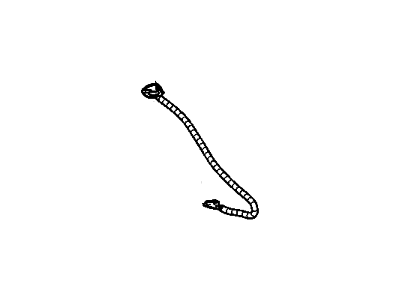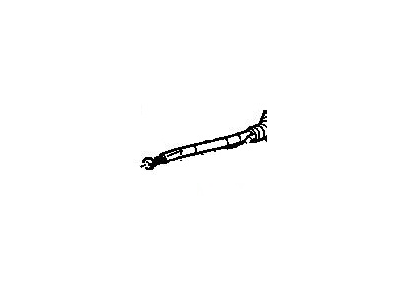My Garage
My Account
Cart
Genuine Chevrolet Cobalt Battery Cable
Car Battery Cable- Select Vehicle by Model
- Select Vehicle by VIN
Select Vehicle by Model
orMake
Model
Year
Select Vehicle by VIN
For the most accurate results, select vehicle by your VIN (Vehicle Identification Number).
4 Battery Cables found
Chevrolet Cobalt Cable Asm,Battery Negative(14.37 In Long)
Part Number: 88987148$102.74 MSRP: $330.56You Save: $227.82 (69%)Ships in 1-2 Business Days
Chevrolet Cobalt Battery Cable
Battery Cable in Chevrolet Cobalt vehicles are used in transmitting electrical current that is required in the starting of the vehicles and ignition of the engines. These cables do deteriorate by drastic age of copper, damage at the rubber covered external layers, and at the terminals and thus lead to connectivity problems and starting failures. Checking on the condition of the Battery Cable should be done more often to enhance the functionality of the cables. In case of issues, premium replacement battery cables are offered to get the lights back on again. These cables are OE specified to provide durability and reliability on the road. Whether a Cobalt has old or frayed battery cables that are affecting the starting of the car, Cobalt owners can have them replace in order to have a smooth starting.
Each OEM Chevrolet Cobalt Battery Cable we offer is competitively priced and comes with the assurance of the manufacturer's warranty for the part. Furthermore, we guarantee the speedy delivery of your orders right to your doorstep. Our hassle-free return policy is also in place for your peace of mind.
Chevrolet Cobalt Battery Cable Parts Questions & Experts Answers
- Q: How to inspect and replace battery cables on Chevrolet Cobalt?A: Periodically inspect the entire length of each battery cable for damage, cracked or burned insulation, and corrosion, as poor connections can lead to starting problems and reduced engine performance. Examine cable-to-terminal connections for cracks, loose wire strands, and corrosion, especially if white, fluffy deposits are found under the insulation at the cable terminal connection. Always disconnect the negative cable from the negative battery post first, even if only replacing the positive cable, to prevent accidental shorting. Before disconnecting any cables, note their routing, then disconnect them at both ends. The ground cable attaches to the body at the battery tray, and another connects the transaxle to the chassis. When replacing the negative cable, disconnect the electrical connector from the battery current sensor and remove the tape securing it. The positive cable runs forward under the vehicle to the remote positive post on the fuse/relay box, and a shorter one goes to the Starter motor. The long positive cable runs from the trunk to the engine compartment, and when replacing it, remove the underhood fuse/relay box, release the cable from plastic ties, and access it by removing seats and carpeting if necessary. Ensure you replace cables with identical parts, usually red for positive and black for ground. Clean threads on the starter solenoid or ground connection with a wire brush, applying corrosion inhibitor or petroleum jelly. Attach lower cable ends first, then the positive cable to the battery post. Secure the battery current sensor on the new negative cable and use electrical tape. Attach the cables to the wiring harness with cable ties, reinstall brackets or clips if needed, and reconnect the ground cable to the negative battery post. After disconnecting the battery, note that the PCM must relearn its former drivability and performance characteristics.
















